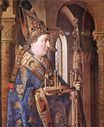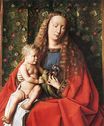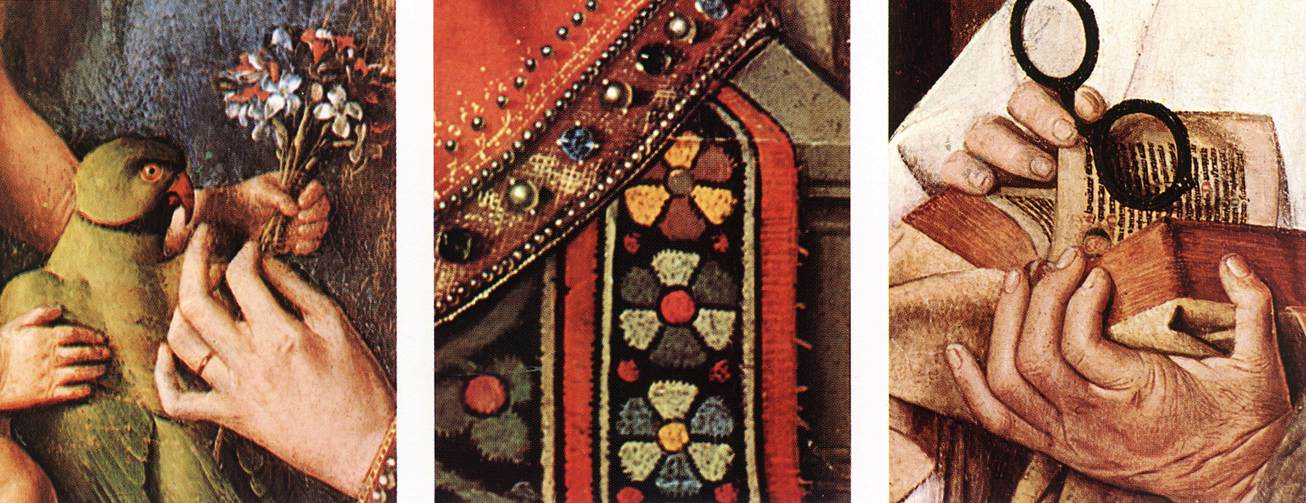Jan van Eyck - The Madonna of Canon van der Paele, detail 1436
 |
 |
 |
 |
 |
 |
 |

The Madonna of Canon van der Paele, detail 1436
122x157cm oil on wood
Groeningemuseum, Bruges, Belgium
<< Previous G a l l e r y Next >>
From Wikipedia, the free encyclopedia:
Virgin and Child is rich with seamlessly woven iconography. Broadly, the elements on the left, including the imitation carvings, reference Christ's death, and those on the right his Resurrection. The painting contains examples of van Eyck's habit of presenting the viewer with what art historian Craig Harbison describes as "a transfigured view of visible reality", via the placement of small, unobtrusive, details which "illustrated not earthly existence but what [van Eyck] considered supernatural truth. They would have been easy to discern for a medieval viewer".
The figures are in a church, surrounded by an arcade of semi-circular arches, which suggests it might be a choir. The scene seems to be illuminated from invisible windows, with light spilling from the left foreground and the leaded windows behind the Virgin's throne. Mary's throne is placed where the altar would normally be positioned. The Child's white cloth is draped over Mary's red robe, which may represent veiled host during celebration of the Eucharist; a reference to Christ's death and resurrection.
The churches in van Eyck's work are not based on historical buildings, but were amalgams of different buildings and fictitious spaces. The church might resemble St. Donatian's, which has since been demolished; it seems to share similarities with the Church of the Holy Sepulchre in Jerusalem, with elements of Romanesque architecture. Van Eyck's paintings are often spatially ambiguous; the more the viewer looks at them the more questions are raised. Reflecting a consensus among art historians, Ward interprets the contradictions as "either curiously incoherent or deliberately designed to enact a complex symbolic message." Mary holds a stem that appears to grow from the parrot's feathers, culminating in a bouquet of red, white and blue flowers. A parrot was sometimes used as an emblem for the Virgin, but its juxtaposition with the plant is incongruous. The parrot and plant emphasise the floral background, symbolising the Garden of Eden, accented by the figures of Adam of Eve. The flowers' colours represent purity, love and humility; its petals are a symbol of the cross and Christ's sacrifice. The narrative of original sin, the expulsion and redemption is thus captured in a single realistic device.
The carved representations of Adam and Eve appear on the uprights of the throne. The capitals on the arms of the throne show Cain beating Abel to death with a club to Mary's left, and Samson opening the lion's jaws to her left. The carvings on the architectural capitals depict Old Testament scenes, including the meeting of Abraham and Melchizedek and the Sacrifice of Isaac.